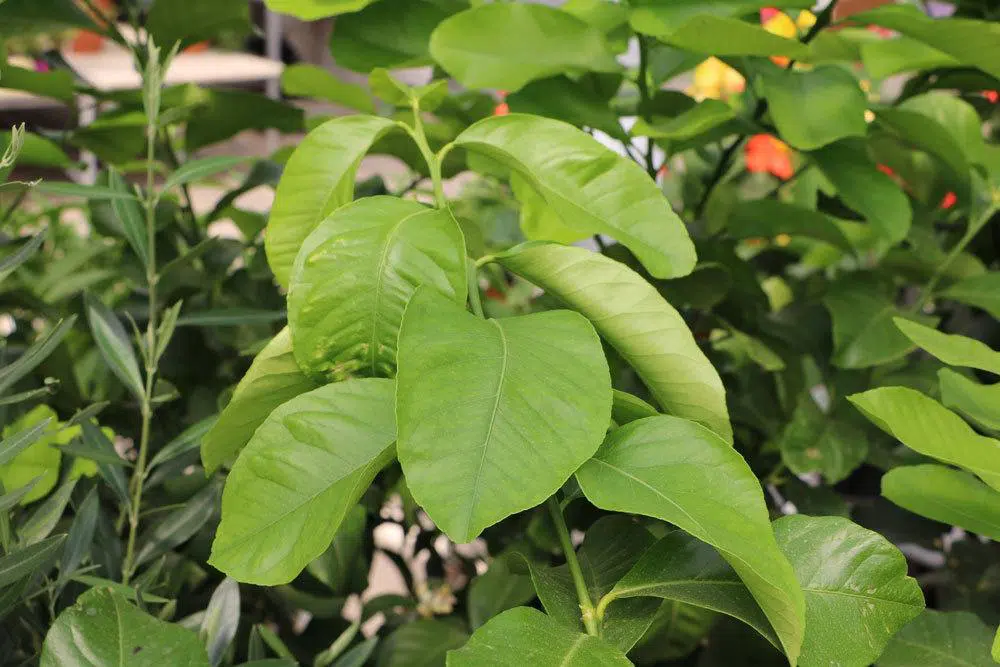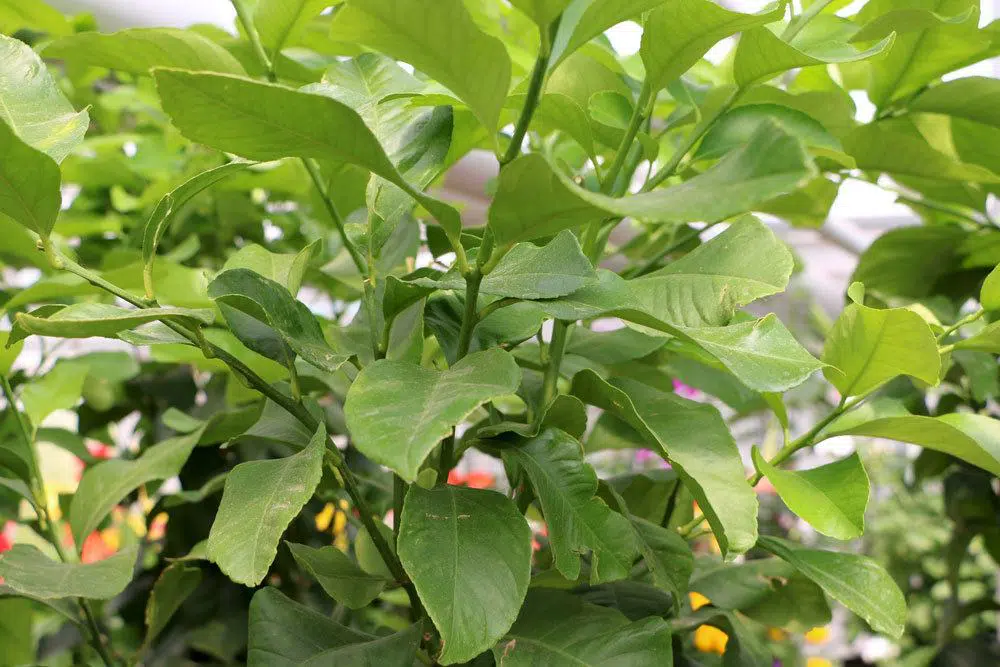In our latitudes, oranges have always been the epitome of exoticism and southern flair. This is even more true for the terrace or balcony at home. Here, the orange tree provides lush greenery and – provided it is well cared for – numerous edible fruits. But time and again the orange tree loses its leaves. Here you can find out what causes this and what help actually works.
Contents
Orange tree loses leaves
The reasons why an orange tree loses its leaves can be many. But only when you know the reasons, you can define specific solutions and provide targeted assistance to the stressed and sometimes even sick plant:
Orange loses leaves during the winter
Often the orange tree loses its leaves during wintering. Since the plant is not sufficiently hardy for winter conditions typical in Europe, it is usually brought through the cold season in the winter garden or a cooler living room. If the ratio of light to temperature is not right at the winter location, the plant’s metabolism gets out of balance. In order to reduce stress and eliminate “unnecessary” ballast that wants to be taken care of, the little tree sheds all its foliage within a short period of time. In determining the causes, we distinguish between two completely opposite cases, which also require completely different forms of assistance:

Warm overwintering
If the orange plant is overwintered in a warm room, there is usually a mismatch between light and temperature to the detriment of the light yield. The temperatures signal a growth period and stimulate the plant’s metabolism, while the light is insufficient to carry out photosynthesis and, in addition, is often depleted of the UV components that are important for the plant by insulating glazing, etc.
Origin: increasing metabolic activity due to temperatures above 12 °C, but lack of UV radiation for complete photosynthesis.
Effects: Plant exhales CO2, CO2 binding by photosynthesis, on the other hand, is not possible; as a result, metabolism is highly energy-consuming and leaves are shed to reduce the number of plant parts that need to be supplied.
Remedy: Reduce temperature of the site, alternatively improve exposure to light
Cold overwintering
The reverse is the case when the orange winters in a cold area. In late winter, the sun gains strength and stimulates photosynthesis. Since the cold temperatures still signal winter dormancy, the supply of necessary nutrients via summer root activity is lacking.
Origin: excessive sunlight in relation to temperature below 12 °C, resulting in onset of photosynthesis in the absence of water and nutrient supply from inactive roots.
Effects: Orange tree loses leaves to restore metabolic balance by removal of photosynthesizing plant parts.
Remedy: increase temperature, alternatively reduce exposure to light
Tip: Since changes in exposure are usually difficult to implement for the layman, it makes sense to implement countermeasures for winter leaf drop primarily by adjusting the temperature. It can be measured and regulated without much effort.
Waterlogging and root rot
Although orange trees require some moisture for healthy growth and fruit production, they are very sensitive to waterlogging. In this case, the orange tree does not actively lose its leaves as a countermeasure, but they do fall off as a result of damage occurring and are thus a clearly readable indicator. The actual cause here is not waterlogging, but rather root rot. However, since this arises in almost all cases from excessive wetness in the root area, these two aspects are closely linked and should not be evaluated as separate causes.
Origin: Origin of root rot due to standing wetness at the root system.
Effects: Brown to black coloration of shoots as a result of root damage and deficient supply, early drop of leaves no longer supplied.
Remedy: Eliminate waterlogging by good soil permeability and moderate watering, in addition good aeration of the site for removal of excessive moisture at the soil surface.

Overfertilization
When the orange tree loses leaves, it is usually assumed that there is a deficiency, as a result of which the orange separates from its foliage. However, when it comes to nutrient supply, the opposite can also be the case. The orange tree needs nutrients only during the growing season, and even then only to a certain extent. If it is exceeded, this oversupply has a negative effect on the metabolism.
- Origin: oversupply of nutrients due to overfertilization.
- Effects: Altered osmotic pressure in the leaf cells due to disturbed metabolism, resulting in brown coloration, withering and decay of the foliage.
- Remedy: not possible in the short term! Reduce or temporarily stop nutrient supply and wait for new shoots, repotting with soil exchange possible to eliminate nutrient reservoirs in the pot.
- Caution: One may be inclined to flush out the excess nutrients after overfertilization by additional watering.
However, intensive watering creates the risk of waterlogging and root rot. In addition, the orange reacts very sluggishly and requires less water immediately after leaf drop due to the lack of green mass, so that the danger of waterlogging increases additionally!
Fungal diseases
Like all plants that thrive in warm, humid climates, the orange is not immune to diseases, the most common of which are fungal diseases. The best known is the basic rot, in which first of all the lower stem segment is affected. Other fungi first settle on the leaves and in this way find access to the organism of the orange tree. Regardless of the specific disease, damage or weakening usually results in undersupply. The first sign is almost always a shedding of the foliage, since these are the only components from which the plant can separate independently.
Emergence: warm and humid climate, preferably with already weakened plant or infestation in the immediate vicinity (infection!)
Effects: depending on the disease, infestation of roots, stem or leaves, resulting in weakening and leaf drop due to lack of nutrients.
Remedy: regular inspection of the plant, if specific disease characteristics are detected, use of fungicides and removal of infested shoots.
Parasites
Aphids and mites are the main parasites that attack the orange tree. The sap used to feed these animals is sucked out of the leaves. As a result, damage occurs due to the necessary bites, which ultimately leads to the death and fall of the leaf.
- Origin: intensive infestation of aphids, mites or other parasites.
- Effects: Damage to leaves, resulting in drying and eventual drop.
- Remedy: control of parasites with potash soap or mineral oil spraying (spider mite), or canola oil preparations, soft soap solution etc. (aphids)
Caution: Parasites do attack individual leaves directly and damage them until they fall off. Far more serious, however, is often the access for pathogens created by the bites. In the case of parasite infestation, it is therefore always worth taking a careful look at possible signs of developing diseases.
Common errors
Now that the common causes and possible remedies are known, it is worth taking a brief look at common errors. This is because the action taken does not always lead to the elimination of the causes. Signs are often misinterpreted, so that the orange tree is subsequently subjected to additional stress:
No pruning!
If the orange tree loses leaves, one is quickly tempted to give additional growth impulses by pruning. However, since the orange grows very slowly, this measure puts additional stress on it. With intensive pruning, it is hardly possible for the plant to compensate for the loss of cut, so that growth activity and the formation of new leaves are slowed down even more.
Do not increase the amount of watering!
Leaf loss is often associated with drought, especially when the drop is accompanied by browning – the sign par excellence of drought. But whether root rot or over-fertilization, an oversupply of water rarely remedies the situation. On the contrary, often an increase in water supply adds another problem point that further stresses the orange tree and makes the conditions for new shoots less favorable.

